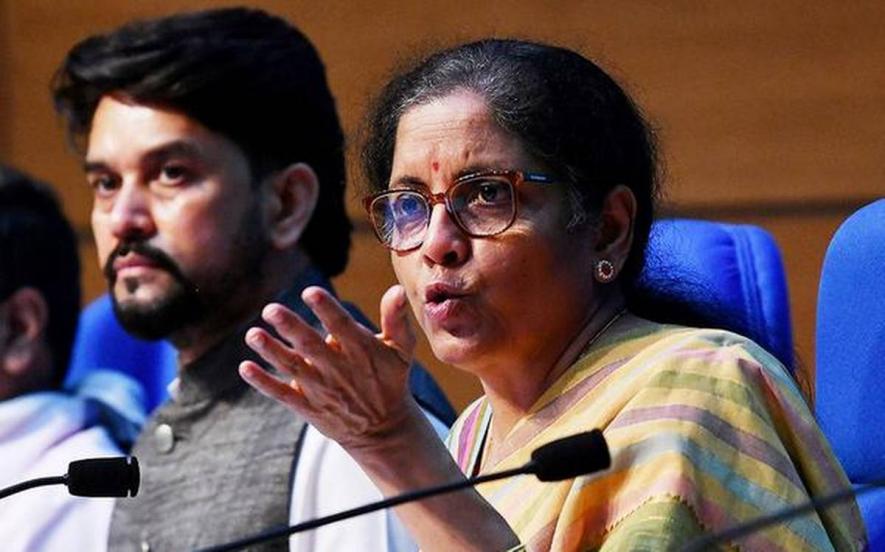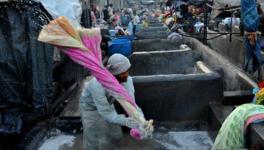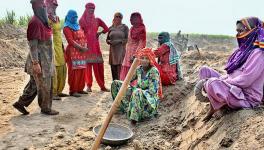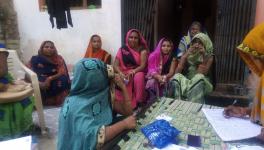Sitharaman ‘Stimulus’ :Recycling Existing Schemes for Farmers as New

Finance Minister Nirmala Sitharaman announced on May 15, the “third tranche” of the “Rs 20 lakh crore economic package” announced by Prime Minister Narendra Modi in his address to the nation on May 12. Just like the announcements made in first two ‘tranches’, in the third one, too, the Narendra Modi government announced a lot of credit/loan measures and policy decisions as a stimulus package to revive the economy.
First, let’s take a look at the measures were announced in the “third tranche”:
Rs 1 lakh crore Agri Infrastructure Fund for farm gate infrastructure for farmers: This fund will be created for financing Agriculture Infrastructure Projects at farm gate and aggregation points (Primary Agricultural Cooperative Societies, Farmers Producer Organisations, Agriculture entrepreneurs, Start-ups, etc.) to develop post-harvest management infrastructure for farm gate aggregation easier.
The Modi government has presented this idea in every Union Budget since it assumed office in 2014. Agricultural Marketing Infrastructure (AMI) was launched as a sub-scheme of the Integrated Scheme for Agricultural Marketing (ISAM)w.e.f October 22, 2018 with validity till March 31, 2020.
Some of theobjectives of this sub-scheme were to promote innovative and latest technologies in post-harvest and agricultural marketing infrastructure, creation of scientific storage capacity for storing farm produce, processed farm produce and agricultural inputs etc. to reduce post-harvest & handling losses, promote pledge financing and market access. The National Bank of Agriculture and Rural Development (NABARD) was the nodal agency.
In her 2019-20 Budget speech, Sitharaman said: “We will invest widely in agricultural infrastructure. We will support private entrepreneurships in driving value-addition to farmers’ produce from the field and for those from allied activities..” The same document says “D/o Agriculture Cooperation and Farmers Welfare (DAC&FW) is implementing Agricultural Marketing Infrastructure (AMI), a sub-scheme of the Integrated Scheme for Agricultural Marketing (ISAM). The Scheme includes storage and other than storage infrastructure projects.”
This shows that the announcement made as a part of an ‘economic package’ is an extension of the existing scheme. In the existing schemes, NABARD is the funding agency. Because of the same reason, the finance minister did not divulge more details on the subject.
Rs 10,000 crore scheme for formalisation of micro food enterprises (MFE): Women and Scheduled Caste/Tribe owned micro food enterprise units’ have been assured financial assistance for technical upgradation to attain food safety standards, brand building and marketing.
This one also is a loan scheme under Make in India, wherein the government has identified the food processing industry (FPI) as a priority sector. Women and SC/STs are categorised under weaker section and are eligible for priority sector lending.
A bulletin issued by the Reserve Bank of India (RBI) , dated March 11, this year explains the available credit facility to the FPI sector: “To boost credit disbursement at affordable rates to the food processing sector, a special fund of Rs 2,000 crore has been set up in National Bank for Agriculture and Rural Development (NABARD). Under this, loans are extended up to 95 per cent of the project cost for setting up, modernisation and expansion of food processing units…”
So, when there is an existing fund for the food processing sector, it is highly unlikely that the government will create another fund to promote women and SC/ST-owned micro food enterprise units. Probably, the government might ask NABARD to increase the fund limit from Rs.2.000 crore to Rs.10,000crore.
Rs 20,000 crore for fishermen through Pradhan Mantri Matsya Sampada Yojana (PMMSY): The Finance Minister did not give out details of the time frame in which this Rs.20,000crore will be used.
There is already an existingscheme for development of inland fisheries and aquaculture, under which expenditure on developmental activities will be shared on 75:25 basis by the Central and the State/Union Territory governments. Sitharaman, in her 2020-21 Budget speech proposed to put in place a framework for development, management and conservation of marine fishery resources and to promote growing algae, sea-weed and cage culture.
PMMSYwas first announced by the Finance Minister in her Budget speech of 2019-20 to promote theBlue Revolution. She had said: “Fishing and fishermen communities are closely aligned with farming and are crucial to rural India. Through a focused Scheme – the Pradhan Mantri Matsya Sampada Yojana (PMMSY) – the Department of Fisheries will establish a robust fisheries management framework. This will address critical gaps in the value chain, including infrastructure, modernization, traceability, production, productivity, post-harvest management, and quality control.”
Under the scheme, the government has created a fund to develop to fishing industry related infrastructure. The objective behind the fund was creation of fisheries infrastructure facilities both in marine and inland fisheries sectors. In the 2019-20 Union budget, Rs.560 crore was allocated for the Blue Revolution. This year it was increased by Rs.10 crore to Rs.570 crore. Co-incidentally, the Blue Revolution website clearly mentions all the objectives the finance minister mentioned in her media briefing on third tranche of the “economic package”on May 15.
These details shows, the finance minister presented an ongoing scheme with budget allocation since years, as a new one.
Under the National Animal Disease Control Programme, Rs 13,343 crore would be spent to ensure 100% vaccination of cattle, buffalo, sheep, goat and pig population (total 53 crore animals) for Foot and Mouth Disease (FMD) and for brucellosis
Now, rewind to June 25, 2019. The Ministry of Fisheries, Animal Husbandry & Dairying put out a Press Release 11 months ago, that reads: “The National Animal Disease Control Programme for Foot and Mouth Disease (FMD) and Brucellosis has been approved by the Cabinet on 31.05.2019 as a new Central Sector Scheme for a total outlay of Rs.13,343crore for five years (2019-24). An amount of Rs2,683.00 crore is proposed for the Financial Year 2019-20. It has the following components:
Foot and Mouth Disease (FMD) control programme: The programme envisages 100% vaccination coverage of cattle, buffaloes, sheep, goats and pigs at six months interval in the entire country. Further, animals will be identified using unique animal identification ear tags. The programme also includes de-worming of targeted population of livestock twice a year as one of its activities.”
It’s anybody’s guess how this scheme has become a component of the “Rs 20 lakh crore economic package”?
Animal Husbandry Infrastructure Development Fund --Rs. 15,000 crore to support private investment in dairy processing, value addition and cattle feed infrastructure was also announced by Sitharaman as part of the third tranche of the ‘stimulus’.
Once again, rewind to March 10, 2018, when the Ministry of Agriculture & Farmers Welfare minister Radha Mohan Singh, announced that the government had set up an Animal Husbandry Infrastructure Development Fund (AHIDF) with a corpus of Rs.2,450 crore.
So, basically, an existing interest subvention scheme implemented through NABARD has been projected as a ‘new’ scheme under the “economic package”.
Promotion of Herbal Cultivation: An outlay of Rs. 4,000 crore has been announced in the third tranche. Recall that it is the National Medicinal Plant Board that is overseeing the National Mission on Medicinal Plants (NMMP) since 2008-09. The main objective of NMPB is to encourage cultivation of medicinal plants and its sustainable management across the country and to reduce pressure on collection from wild habitat in forests.
This is an ongoing programme since over a decade. How does this fit in the “economic package” in 2020?
Beekeeping initiatives – Rs 500 crore:The money will go towards infrastructure development related to Integrated Beekeeping Development Centres, collection, marketing and storage centres, post-harvest and value addition facilities etc; capacity building with thrust on women; development of quality nucleus stock and bee breeders among other things.
Now, the National Bee Board exists since 1993. Its website clearly states all objectives mentioned by the Sitharaman in her media briefing. A centrally-sponsored scheme,Sweet Revolution was started in 2017-18 with the same objectives.
Another existing scheme has been introduced as part of the economic package,
From ‘TOP’ to TOTAL - Rs 500 crore: “Operation Greens”, run by Ministry of Food Processing Industries (MOFPI), will be extended from tomatoes, onion and potatoes to all fruit and vegetables.
Operation Greens had the same Rs.500 crore budget outlay in 2018-19. The extension of the scheme is on pilot basis as of now. Hence, how this will revive the economy now?
After “three tranches” of announcements on the “economic package” to revive the economy, government did not announce any immediate investment to revive the market. What it has announced in three days are all either loan subsidy schemes or loan guarantee schemes for the existing programmes.
The writer is an independent journalist.
Get the latest reports & analysis with people's perspective on Protests, movements & deep analytical videos, discussions of the current affairs in your Telegram app. Subscribe to NewsClick's Telegram channel & get Real-Time updates on stories, as they get published on our website.
























